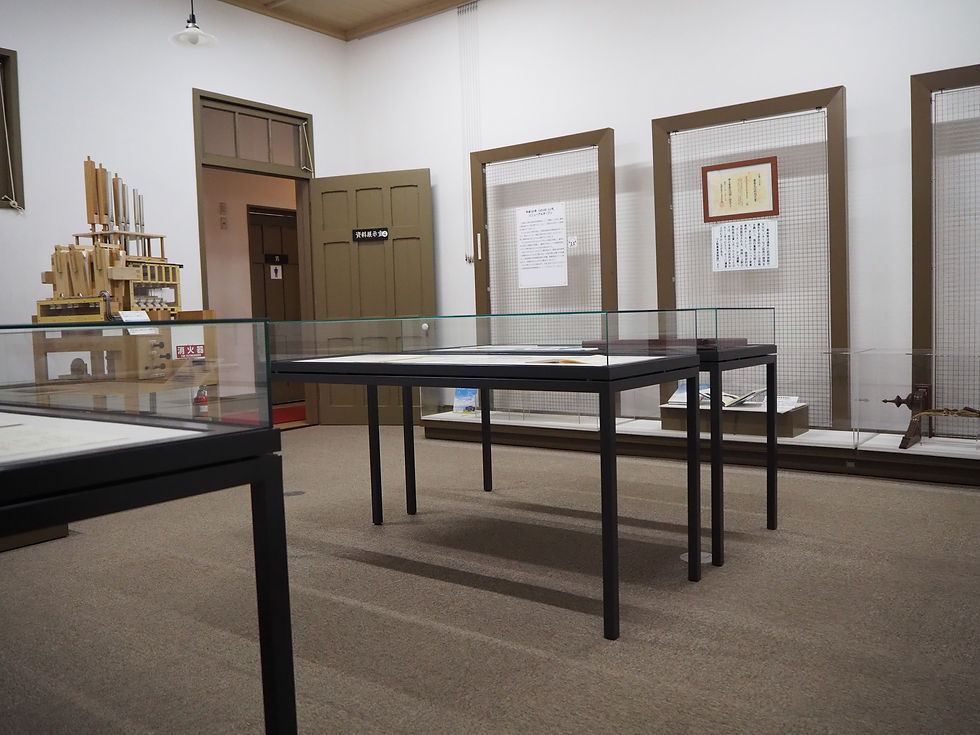The Former Tokyo Music School in Ueno 奏楽堂
- Orange

- Feb 21, 2020
- 3 min read
Japanese is following after English. 日本語は英語の下にあります。
The pipe organ at the front of the stage was imported by Marquess Yorisada Tokugawa from England in 1920 and presented to Tokyo Music School in 1928. It was built by Abbott and Smith Organ Builders, and it has 1,379 pipes in total.
It produces sound by blowing air through a series of hollow tubes, which is rare in the world today.
It’s the oldest organ for concerts in Japan and its soft sound is the charm.

The main building of Sogakudo was constructed as a school building of Tokyo Music School, the predecessor of Faculty of Music, Tokyo University of the Art in May 1890.
Since then, many musicians who laid the foundation for Japanese modern music studied here and spread their wings around the world.

The structure of the main building was 2-story wooden building with the pantile roofing, consisting of central building and both wings.
Sogakudo is the name of the auditorium-cum-music hall on the second floor of the central part.
At this hall, Rentaro Taki (1879-1903) played the piano, Kosaku Yamada (1886-1965) sang songs, and Tamaki Miura (1884-1946) made her debut at the first opera performance of a Japanese person.
Rentaro Taki (1879-1903) : Pianist and one of the best-known composers of Japan.
Kosaku Yamada (1886-1965, 79 years old) : Japanese composer and conductor in classic music. He was the first one to create western orchestra, won the world wide reputation, and was known among the world. Also he contributed wining reputation of western classic music in Japan.
Tamaki Miura (1884-1946) : Japanese opera singer who was the first singer won the world wide reputation.

According to the documents, Sogakudo was designed by Hanroku Yamaguchi and Masamichi Kuru, who were engineers of Ministry of Education at the time and its acoustic design was done by Rokushiro Uehara.
Sogakudo played a central role in music education in Japan after the foundation, but the usage of Sogakudo was in 1981 due to functional problems and deterioration. Then Taito Citi inherited this building from Tokyo University of the Arts in 1983.

It was reconstructed and restored at the current site to be opened to the public in 1987. Later, this Japanese oldest western-style music hall was designated as a national important cultural property in 1988.

[Facility outline]
Site area 1,799.97m2 (545 tsubo which is Japanese scale)
Building area 785.39m2 (238 tsubo which is Japanese scale)
Architectural area 1,851.39m2 (561 stub which is Japanese scale)
Audience Seats : 310



旧東京音楽学校奏楽堂は、日本最古の洋式音楽ホールとして昭和63年(1988)に国の重要文化財に指定されています。
舞台正面のパイプオルガンは、大正9年に徳川頼貞侯がイギリスから購入し、昭和3年に東京音楽学校に寄贈したものです。アボット・スミス社製でパイプ総数は1,379本です。
いまでは世界でも珍しい空気式アクション機構の、わが国最古の貴重なコンサート用オルガンでやわらかな音色が魅力です。
本館は、東京藝術大学音楽学部の前身であった東京音楽学校の校舎施設として、明治23年5月に建築されたものです。
以来、日本の近代音楽の礎を築いた多くの音楽家が、ここで学び、巣立っていきました。
本館は木造二階建ての桟瓦葺で、中央家と翼家から成ります。
奏楽堂とは中央家二階にある講堂兼音楽ホールの呼称です。
かつて滝廉太郎がピアノを弾き、山田耕筰が歌曲を歌い、三浦環が日本人初のオペラ公演でデビューを飾った由緒あるホールです。
設計は、当時の文部省技師であった山田半六と久留正道が担当し、音響設計を上原六四郎が手掛けたと記録されています。
創建以来、日本における音楽教育の中心的な役割を担ってきましたが、機能面の問題と老朽化から昭和56年に使用が禁止され、昭和58年に台東区がこの建物を東京藝術大学から譲り受けました。
昭和62年には、現在の地へ移築・復元され、一般公開されるようになりました。また、本館は日本最古の洋式音楽ホールとして昭和63年に国の重要文化財に指定されています。



Comments